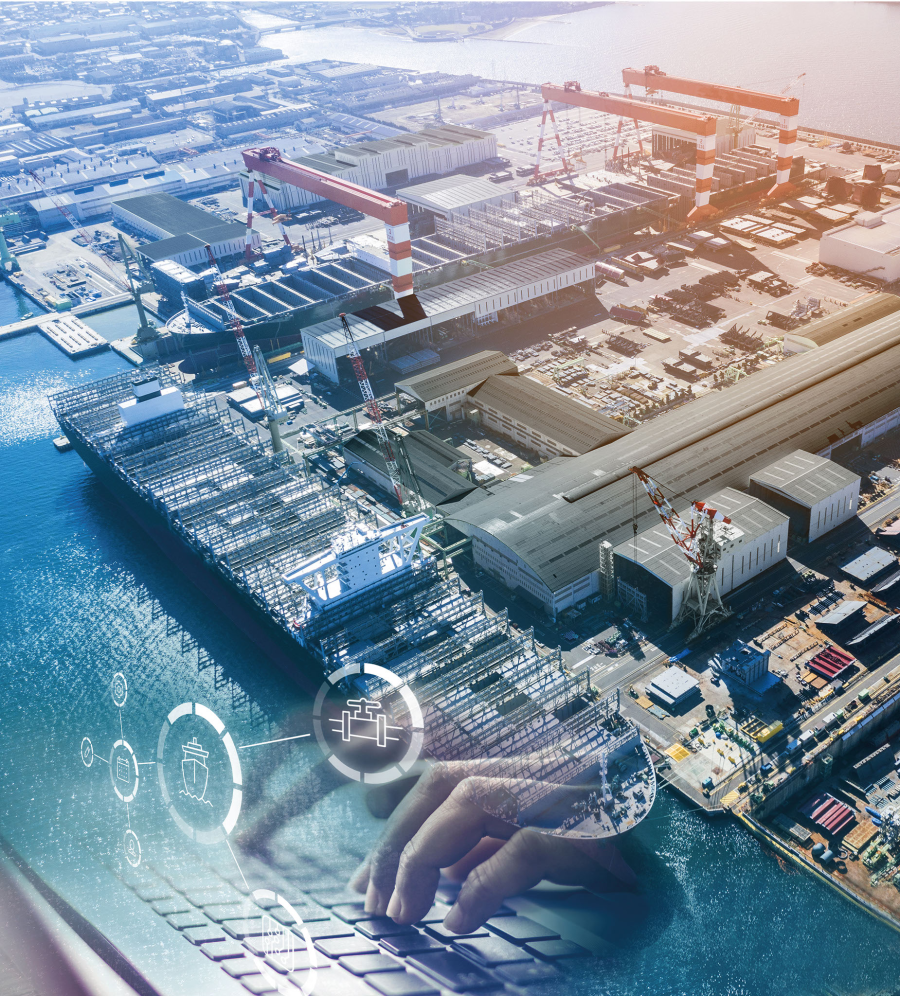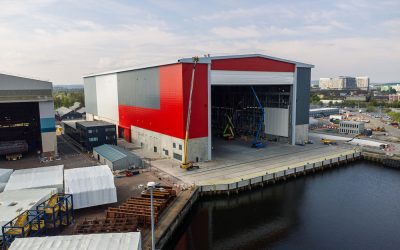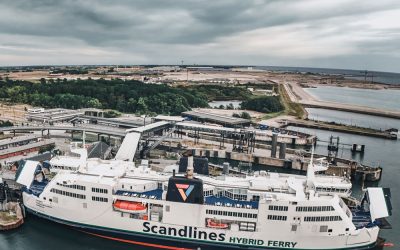Shipbuilding-specific Product Lifecycle Management will be a gamechanger in the industry’s digital transformation, writes Ludmila Seppälä, Cadmatic business development director
Cadmatic has been at the forefront of solutions for ship design and shipbuilding since the early 80s, advancing the field along with the IT-enabled capabilities of CAD and digitalisation. Earlier this year, Cadmatic and CONTACT software entered into a strategic OEM partnership, aimed at delivering a significant, industry-first to the market – the first shipbuilding-specific PLM (product lifecycle management) solution. This is the start of a major transition within the industry to fully realise the value of digital assets and the digitalisation of processes. It’s also the first step on a mission to develop digital transformation expertise and capacity that’s specific to our industry – rather than transferred in from other disciplines such as automotive or process engineering.
Why is this such as big deal? As we all experience on a daily basis, ship design and building are already complex processes, requiring collaboration between hundreds – if not thousands – of people, across the world, in different languages, over the course of several years, millions of parts, thousands of drawings and millions of dollars. For some smaller nations with significant shipbuilding industries, the delivery of a big vessel, can be detected in an annual rise in GDP – such is the scale of these projects.
Managing the information within these projects is essential to their success, both in terms of commercial performance, delivering vessels to specification and budget, and delivering the performance and safety the industry needs. It’s also becoming a tougher challenge as time goes on, as new vessels need to integrate new fuels, new green technologies, and do it all faster than ever thanks to accelerating regulations and sustainability goals. Digital transformation is what keeps these gargantuan, sprawling projects on track.
Why do we need a shipbuilding-specific tool? Product, data and processes
PLM is most commonly known as product lifecycle management, but when applied to the shipping industry, it might be better known as process lifecycle management. Tools for the automotive, or the airline industry, for example, operate on a product basis. In the example of a car, there is extensive research, design, prototyping, and then once the design is complete, millions of the same car can then be produced. Aircraft design follows a similar pattern.
When it comes to shipbuilding, however, every vessel is a one-off, designed to fit a specific commercial need or brief. Even between sister vessels, there is a limited amount of design information that anyone can copy across. At the same time, because of the pressures to keep shipyards fully utilised, a yard may well be designing and beginning to cut steel for a vessel at the same time; a shipyard cannot afford to have a slipway empty, losing money. This is a fundamentally different dynamic, and a much less linear trajectory, to how these projects function in other industries – and a reason why we need dedicated software and processes for shipping.
Having control of the product data and processes can significantly affect the time of execution, workload, and commercial profitability of the shipyards.
Document-driven versus data-driven
It can take between one and five years for a ship to go from concept to steel cutting. Over that time, there might be anywhere between 500 to several thousand people working on the project, handling 1-5 million separate parts, each of which has a separate data trail and set of documents attached.
Much of this complexity is handled within a 3D CAD design, and associated documents. It’s essential that project managers can access both the design and the associated documents for each part, and can track who has signed off what, when and how.
For example – if someone decides that a certain pump is unsuitable, and the vessel needs another one from another manufacturer with different characteristics. This then creates a chain. Someone needs to check the new specification of the pump, to see if it is what is needed, and then replace the pump in the 3D model. Someone else needs to ensure the connections to the pipe fit – then someone needs to sign off on all of this. In a typical shipbuilding project, there could be 50,000 of these situations going on simultaneously. From a project management point of view, it’s essential to have visibility of what’s going on and who approved what; which then creates points at which managers can control the process.
In addition to being highly complex, shipbuilding is a document-driven industry. When a project is first agreed upon with the shipyard, they will make a project delivery timeline, outlining which drawings etc. will be received by which date, the first of many, many more interrelated documents to come. Matching up these documents with each other and with rapidly evolving 3D model is no easy task. Thanks to the number of variables involved, there can often be significant deviations between designs ‘as engineered’, ‘as visualised’ ‘as designed’, and ‘as built’ if projects aren’t carefully managed. Cutting down on this variation is one of the major challenges of data and process management.
Making intelligent connections
So how can we build a framework that works for shipping, and turns this complexity into some sort of order? The essential challenge isn’t simply to put all the data in one place – it’s to build meaningful connections between the data model and documents, and all the information involved.
Building these meaningful connections is the focus of our strategic OEM partnership. CONTACT’s Elements platform offers a wide portfolio of future-proof, PDM-specific applications. Cadmatic will build on this to add shipbuilding specific expertise to make the best use of this technology, flexibly expanding and adapting solutions according to shipbuilding requirements. If the sheer amount of information in each product is a data lake, it will require shipbuilding-specific knowledge to fish in it and catch the most useful insights.
Handling this data is where shipping-specific expertise is so essential. Shipbuilding CAD is very specific – individual parts aren’t stored together, but instead as topological relation between parts, in which every element is linked with many others. Only by creating a solid platform for storing the data – and adding industry-specific intelligence on how to fish in the data lake – can we maximise the benefits and create the solution the industry needs.
Adding lifecycle management into the picture
The benefits of dedicated PLM go beyond project managing the design and construction of a vessel. Currently, beyond the sea trials and first year of a vessel’s operation, a yard bears little responsibility for a vessel’s performance. After that first year, for the next two or three decades of a vessel’s lifetime, owners and operators need to painstakingly reconstruct a vessel’s design data to handle services like hull cleaning, retrofits or other maintenance activities. Whole industries have sprung up to recreate datasets that already exist at the design stage. Building a shipping-specific PLM system enables the creation of a digital twin that owners and operators can then use effectively throughout the lifetime of their ship – creating another way that yards can add value to the process. PLM allows yards to be more agile in adopting these technologies or delivering retrofits to future-proof fleets. In parallel, managing PLM on one platform helps shipyards adapt to the industry-wide digital transformation – digitising key processes to extract insights and manage them more closely.
This, again, is distinct from other industries. In process manufacturing, the party designing a factory will often be the same one that manages its entire lifecycle, from production all the way to decommissioning. In the automotive industry, car manufacturers are using digital twins to better service cars for longer, throughout their lifecycle. Dedicated lifecycle management for shipping enables the industry to do exactly that – to manage a vessel effectively throughout its lifecycle, in a way shipping has been unable to before.
Shipyards are hubs that house a range of dedicated expertise and skills – engineering, IT, project management and more. PLM systems design for shipbuilding will be the foundation for making the most of these skills as yards deliver the fleets of the future.






